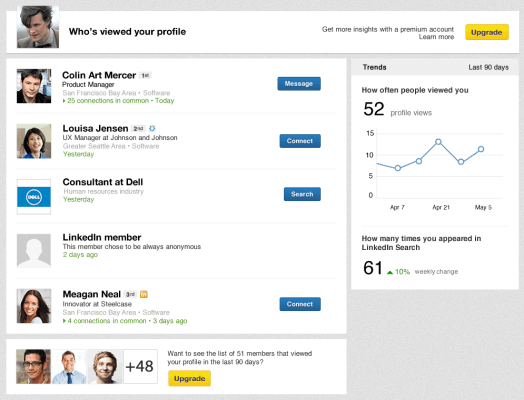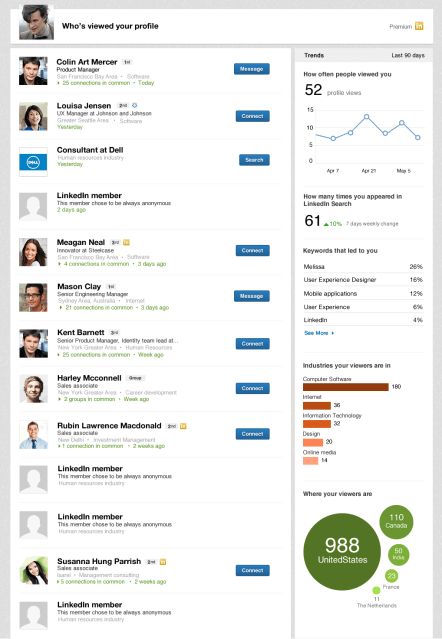LinkedIn has been busy upgrading pieces to its business social network in recent weeks, with updates to its contacts, the release of a new mobile contacts app for iPhone, revamped user profiles, the addition of channels to its news site LinkedIn Today and, most recently, added security via two-step authentication. Now, the company is rolling out improved analytics and a new look for its “Who’s Viewed Your Profile” feature, which tracks the number of times your name has appeared in LinkedIn Search, and how that has changed over time.
With some 225 million users, the company has been working to launch more features that keep people engaged with the site, returning to it more often, and staying with it longer. By appealing to humans’ natural curiosity, the “Who’s Viewed Your Profile” feature is a regular draw for those interested in their popularity or “findability” on the network, but it can also help you seek out new connections, discover mutual friends, or simply provide better insight into what people are searching for across LinkedIn.
For free users, the feature now showcases a recent list of those viewing your profile, with some basic analytics to the right. At the bottom, it also suggests users upgrade their free accounts for access to historical data.
Premium users, meanwhile, can see who’s been looking at their profile over the past 90 days, as well as which industries or geographies those searches are coming from. And in addition to the trend graphs and search result counts, it also shows you what keywords people are querying which then led them to find you. This feature is most helpful for those who are hoping to have their LinkedIn resume found by potential employers or those looking to heavily network on the site for other reasons, as the keyword tracking can help you understand what people are looking for when searching across LinkedIn.
Next to each member’s profile in the results list is a button that lets you message or connect with the searcher, depending on whether or not you’re already connected.
This upgraded section will roll out beginning today to users worldwide.

